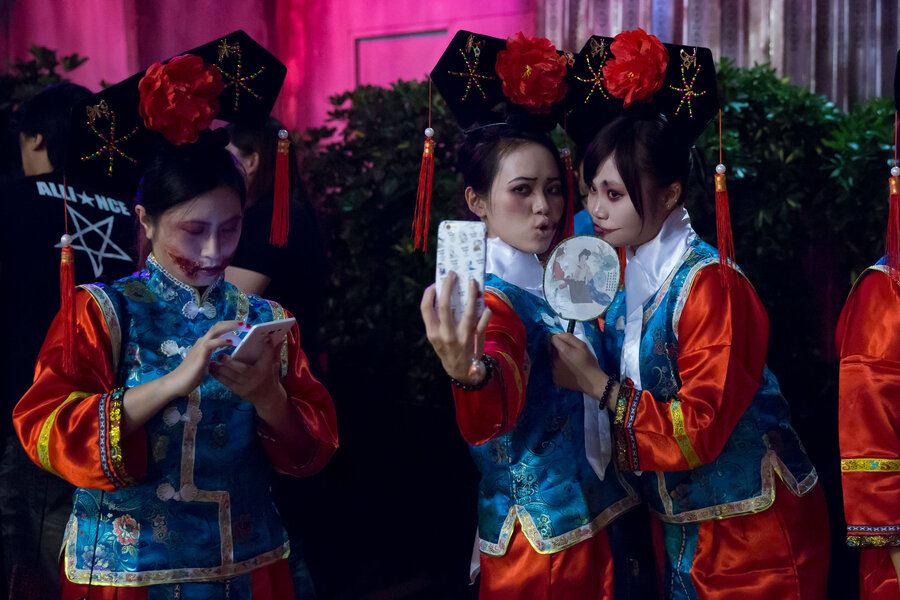What does Halloween look like outside the US?
Loading...
The holiday many Americans celebrate on Oct. 31 is rooted in European traditions. But today, Halloween, like the rest of American pop culture from movies to music, now runs amok the world over.
And as in the US, commercialization is driving – and altering – the holiday dramatically as well. In the US, Halloween sales - on candy, costumes, decorations, and parties – now generates $6.9 billion annually, or almost $75 per person, and businesses can get scary in their tactics to cash in on it, The Christian Science Monitor reported.
Halloween has emerged an American tourist attraction for British visitors, the BBC reported.
Thousands of British tourists are drawn to haunted houses and mazes at some of the 80 different Halloween attractions in Florida, the second-largest tourist destination for people visiting from the United Kingdom, the BBC reported. The state drew 23.7 million visitors around Halloween in 2014, an increase of 8.5 percent from 2013.
America's commercial tastes have not only transformed an autumnl celebration into one of the year's most expensive events, they have also exported Halloween to other countries.
Pumpkins decorate department stores and parks in Taiwan, and children now celebrate Oct. 31 at school with treats and traditional Halloween costumes, such as witches and fairies, according to the Sydney Morning Herald.
An October, ghost-oriented celebration is a very new import, says Sarah Zimmerman, who was born in Taiwan but moved to the United States as a child. Some people who lived near foreigners might have exchanged a few treats during her childhood in Taiwan, but there were certainly no costumes. Ms. Zimmerman compares the Chinese "Ghost Day," celebrated in early July to Halloween (or Mexico's November holiday, Day of the Dead) when people leave treats so that "ghosts" don't bother them.
"It's kind of like trick-or-treating, but in America we flip it around," Zimmerman tells The Christian Science Monitor in a phone interview. "So we're like the ghosts, but in Taiwan you give (the ghosts) treats so they don't trick you."
In Japan, the American Halloween has been adopted as an occasion to celebrate fall by decorating one's home and self, according to The Associated Press.
Japanese Halloween fans have little interest in ghosts or witches, and most don't know what "trick-or-treat" means, but on Oct. 31, they are ready to party. Teenagers, especially, dress up and parade in costume, and plaster the resulting photos all over social media. The revelry can last for the entire month of October, and it costs at least 20 billion yen, or $170 million, per year, the AP reports.
"Businesses are eager to use something that's this well-known to everyone as an opportunity," Yasushi Senoo, who has been studying the economics of the spooky season as chief research analyst at Mitsubishi UFJ Research and Consulting in Tokyo, told the AP.






